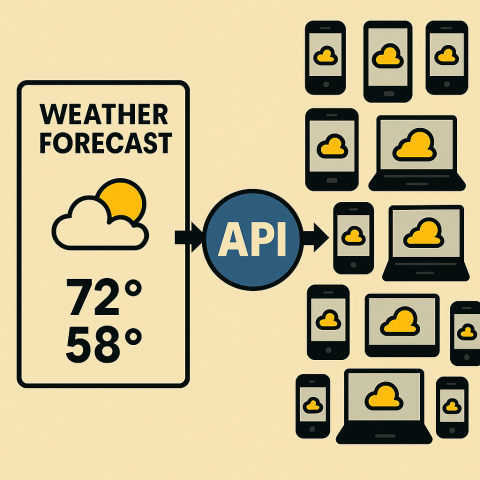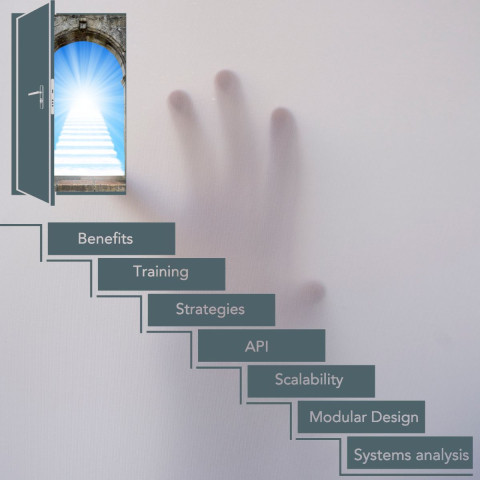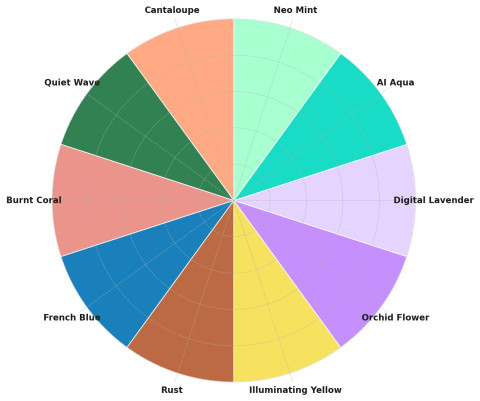AI Transcription Software - Definitive Guide Part 1
Contents
- Evolution
- Benefits and challenges
- The top 8 AI Transcription Services
- GDPR - Can you use AI note-takers in the workplace?
- The Future
1. The Evolution of AI Transcription Software
AI-powered transcription software has revolutionised the way businesses, media professionals, educators, and individuals convert speech to text. From basic speech recognition systems to advanced AI-driven solutions that summarise, analyse, and generate actionable insights, transcription technology has evolved significantly. This article explores the development of AI transcription software, its current capabilities, and what the future holds for this rapidly advancing field.
a. How Do AI Note-Takers Work?
AI note-taking tools record, transcribe, and summarize spoken conversations in real-time, using machine learning and natural language processing to generate transcripts. Some tools even analyse speech patterns, highlight key topics, and suggest action points.
While this technology can be helpful for meeting documentation, it raises serious data protection concerns, particularly when handling sensitive or personal information.
b. Early Days: Rule-Based Speech Recognition (1950s - 1990s)
The journey of AI transcription began with rule-based speech recognition systems, which relied on predefined rules and phonetic models. Some early milestones include:
- 1952: Bell Labs’ Audrey System – One of the first speech recognition systems, which could recognise digits spoken by a single voice.
- 1960s: IBM Shoebox – Recognised 16 spoken words and digits, marking an improvement in speech processing.
- 1970s-1980s: Hidden Markov Models (HMMs) – These statistical models significantly improved accuracy by recognising patterns in speech rather than relying solely on predefined rules.
However, these systems were limited to specific vocabularies, required extensive training, and struggled with variations in pronunciation, accents, and background noise.
c. The Rise of Machine Learning and Neural Networks (2000s - 2010s)
The introduction of machine learning (ML) and deep learning (DL) in the 2000s transformed transcription accuracy and scalability. Key advancements included:
- 2000s: Statistical Speech Recognition – Leveraged machine learning to analyse speech patterns.
- 2010s: Deep Neural Networks (DNNs) and Recurrent Neural Networks (RNNs) – Enabled AI transcription tools to learn from vast amounts of audio data, improving accuracy and context recognition.
- 2017: Google’s Transformer Model – Introduced a new deep learning architecture that enhanced AI’s ability to understand language contextually.
During this era, AI transcription software became more widely adopted, with platforms like Dragon NaturallySpeaking, IBM Watson Speech to Text, and Google’s Voice Search offering more robust solutions.
d. Cloud-Based AI Transcription & Real-Time Processing (2020 - Present)
The latest phase in AI transcription has been defined by cloud computing, real-time transcription, and AI-powered summarisation. Key developments include:
- Real-Time Transcription – AI models now process speech instantly, offering live captions.
- Multi-Speaker Recognition – Modern systems differentiate between speakers, improving transcript clarity.
- AI Summaries & Action Items – Some tools go beyond transcription to generate meeting summaries, action points, and topic highlights..
- Multi-Language Support & Translation – AI models can now transcribe and translate conversations in real-time across multiple languages.
- Improved Accuracy via Self-Learning Models – AI transcription tools continuously refine their models by learning from user corrections and large datasets.
With the rise of remote work, online learning, and automated business workflows, AI transcription has become a crucial tool for businesses, journalists, educators, and professionals worldwide.
DID YOU KNOW
A person can speak around 150-170 words per minute—and an average of
around 10,000 words per hour.
A person speaks 7 times faster than he writes.
2. Benefits and challenges of AI Transcripts
AI-powered meeting transcription tools offer significant advantages, but they also come with some limitations.
a. Benefits
- Automated Note-Taking – AI eliminates the need for manual note-taking, allowing participants to focus fully on discussions.
- Time-Saving – Meetings are transcribed in real time, reducing the time spent summarising key points afterward.
- Improved Accessibility – Transcripts help those who are hearing impaired, non-native speakers, or anyone who missed the meeting.
- Better Organisation & Searchability – AI tools allow users to search for specific keywords, making it easy to locate information within long conversations.
- Actionable Insights & Summaries – Some AI transcription tools generate meeting summaries, action items, and key takeaways automatically.
- Integrations with Business Tools – Many AI transcription services integrate with Zoom, Microsoft Teams, Google Meet, Slack, and project management software.
- Increased Accountability – Having a written record of meetings helps clarify responsibilities and reduces miscommunication.
- Multilingual Support – Some AI tools offer real-time translation, making meetings more inclusive for international teams.
DID YOU KNOW
The UK's Speech Recognition market is projected to grow by 13.08% between 2025 and 2030, reaching a market volume of $512.10 million by 2030
b. Challenges
- Accuracy Issues – AI transcription accuracy depends on audio quality, background noise, and speaker clarity; errors may occur, requiring manual corrections.
- Lack of Context Understanding – AI may misinterpret industry-specific jargon, accents, or nuanced discussions, leading to incorrect transcriptions.
- Privacy & Security Risks – Storing transcripts in the cloud raises concerns about sensitive data security, confidentiality, and compliance with GDPR or HIPAA regulations.
- Limited Emotional & Non-Verbal Cues – AI captures words but misses tone, emotions, and body language, which are crucial for full communication.
- Over-Reliance on AI – Teams may become overly dependent on transcriptions instead of engaging in active listening during meetings.
- Potential Legal & Compliance Issues – In some industries, storing meeting transcripts could create legal risks, especially if confidential or proprietary information is recorded.
- Cost Considerations – While some AI transcription tools are free, premium features (e.g., advanced summaries, integrations, and enhanced accuracy) often require a paid subscription.
c. Summary
AI meeting transcription tools are highly beneficial for productivity, collaboration, and accessibility. However, businesses must weigh the accuracy, privacy, and security concerns before fully integrating them into their workflow. Using AI transcripts as a supplement rather than a sole record of meetings is often the best approach.
Building Bespoke software systems is what we do.
Contact us today for a chat about how we can help you evolve your business by saving money, saving time and increasing productivity.

Mailchimp Alternatives Guide 2025
Is Mailchimp still the best FOR EMAIL MARKETING? Or are UK businesses find...
5 min read

The Hidden Cost of Poor System Integration
Why Poor Integration Between Systems Is Holding Your Business Back And How...
8 min read

Admin Overload: The Silent Business Killer
The cost of manual, repetitive admin tasks In countless small and medium-s...
3 min read


